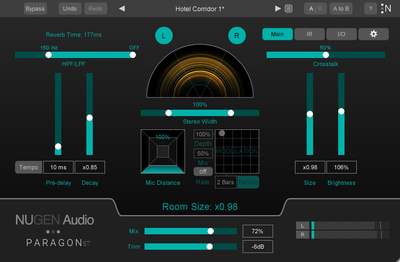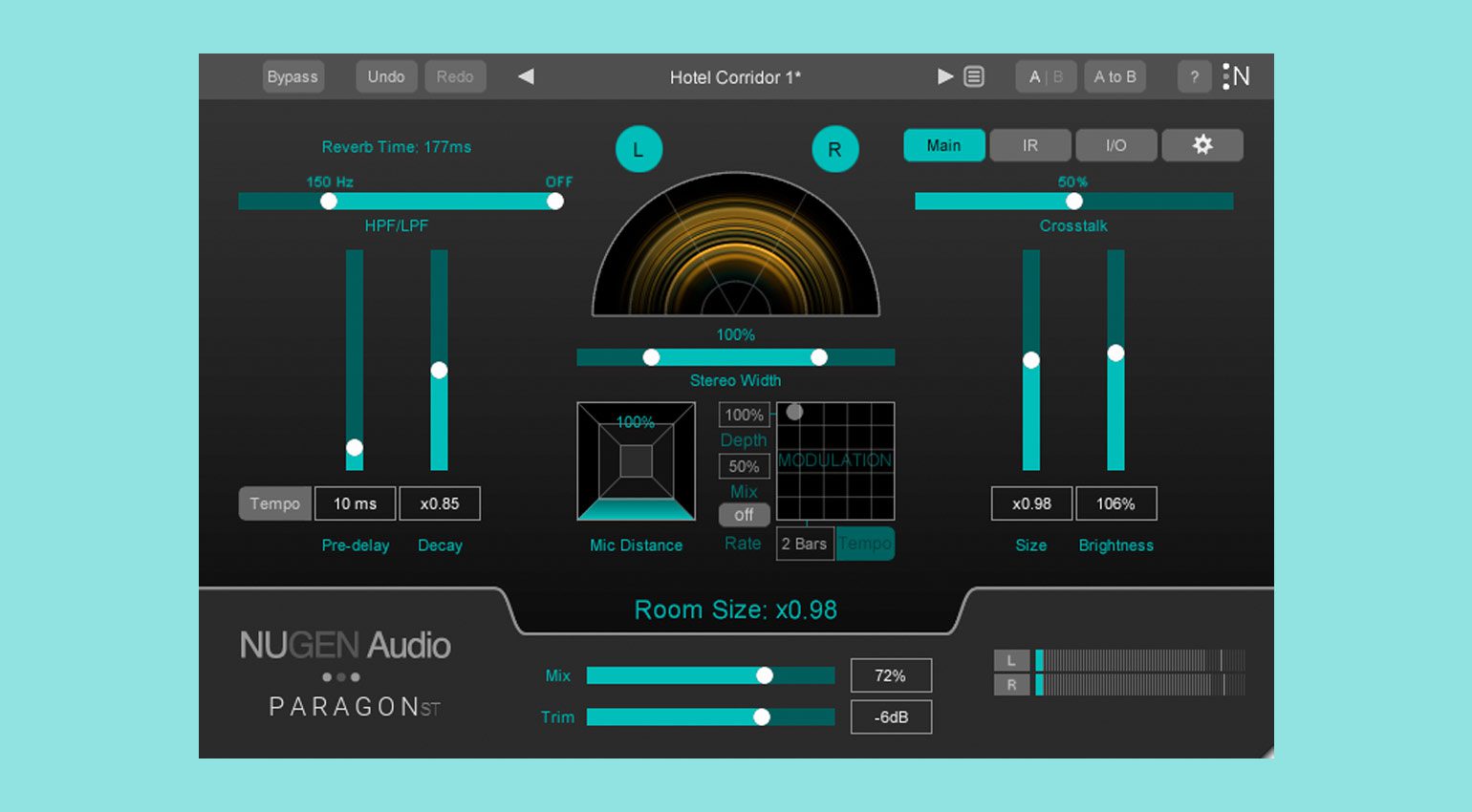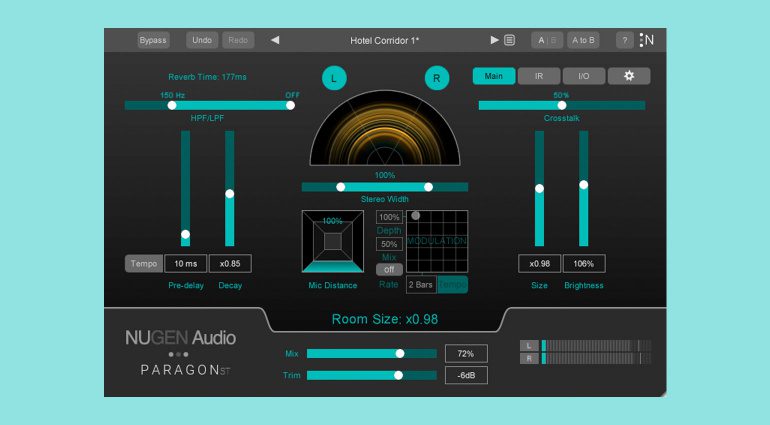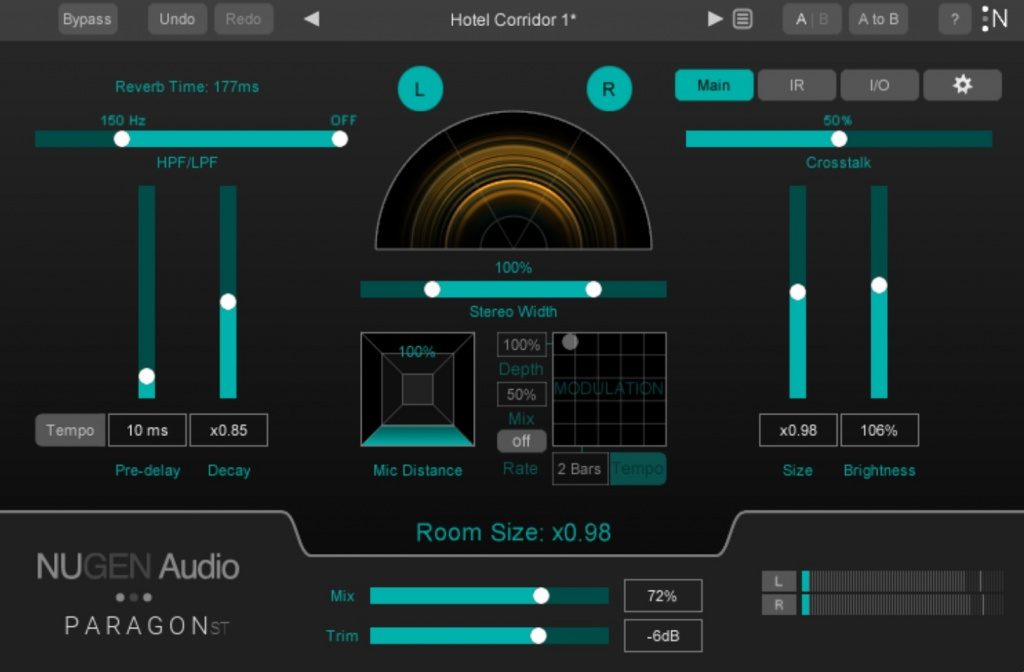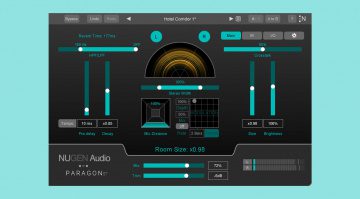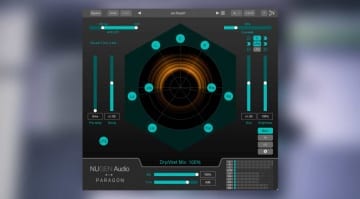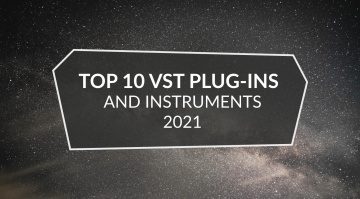Review: NUGEN Audio Paragon ST – a remarkable surround reverb goes stereo
Last October, developer NUGEN Audio released an ambitious reverb plug-in called Paragon. Paragon combines convolution and impulse response re-synthesis to deliver the kind of refined control you wouldn’t normally expect out of regular IR reverbs. Granted, the latter usually sound nice – and realistic. After all, they bring snapshots of actual spaces and their inherent acoustics to life, in whatever sophisticated way made sense for the developers.
But there’s only so much you can accomplish with straight-up convolution. That’s where the ability to re-synthesise those IRs comes in, adding the “tinkering power” of algorithmic reverbs to the convolution reverb. That, and extensive multi-channel audio support are the hallmarks of Paragon. Think of Paragon ST as the same reverb engine re-purposed for regular stereo. It sounds enticing, and it sure is! Here are some impressions from having Paragon ST in action…
NUGEN Audio Paragon ST
If you ever tried Paragon, ST ought to be instantly familiar, but perhaps not as busy. After all, it’s literally the same reverb engine in use, but with just two channels of audio to handle. Owing to the re-synthesis engine, you still get to enjoy control over key parameters such as decay, room size, and brightness. What’s more, there are also spectral analysis and EQ sections to really home in on the details. The EQ lets you change the frequency response of the actual spaces (that’s EQ-ing the reverb itself and not just the wet sound) and you can also alter the frequency-dependent decay rate. Tweak away!
Other interesting possibilities offered by Paragon ST are stereo width and modulation settings. So if you want a wider reverb, or one that sounds like it’s moving in slightly unpredictable ways, you can have that. Additionally, some parameters, such as pre-delay, can be synchronized to the host tempo. This can potentially save you lots of automation meant to make the reverb sound musical. Another very interesting feature is the Mic Distance Control. It lets you place a virtual microphone closer or farther away in the virtual space. Fiddling with the parameter doesn’t merely make the sound louder or quieter, it actually defines the sound and response of the early reflections. Psychoacoustics are fun!
Twisting new sounds
Note that unlike most IR-based reverb plug-ins, Paragon ST does not apply time-stretching. This is the trick behind the plug-in’s remarkably clean, artefact-free output. Because of its synthesis virtues, Paragon ST does not take up tens to hundreds of gigabytes of storage space, either. Now, if you like presets that sound completely out of this world on first try, Paragon ST may seem a little stern in its offerings. You are mostly meant to take the stock sound and twist them into something more or less different sounding from the initial patch using the plug-in’s powerful controls. Also, depending on how you mix the reverb, you might find the combinations of certain spaces and EQ settings bring desirable results like warmth, clarity, and other enhancements you wouldn’t normally think of when reaching out for a reverb.
All in all, Paragon ST is the kind of plug-in that’s fun but also sophisticated. That’s a rare treat, because getting to have both takes serious conceptual and technological effort. NUGEN faced both challenges to deliver a standout modern reverb. It’s all about having a great reverb engine and finding the right ways in which to spin it.
NUGEN Audio Paragon ST – Price and availability
Until December 6 2021, Paragon ST is being sold for USD 149 instead of the regular price of USD 299. These are serious savings, so don’t miss out if you are interested! A demo version is available to try from the NUGEN website, too. Paragon ST works in 64-bit VST3, AU, AAX, and AudioSuite formats under macOS (10.9 or newer) and Windows (Vista or newer).

